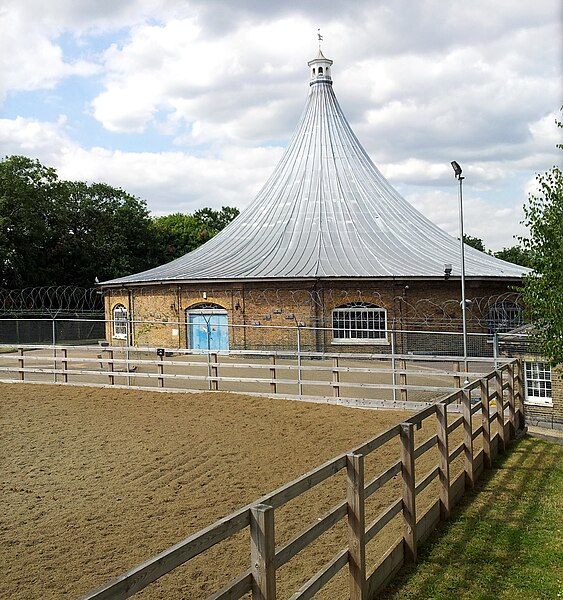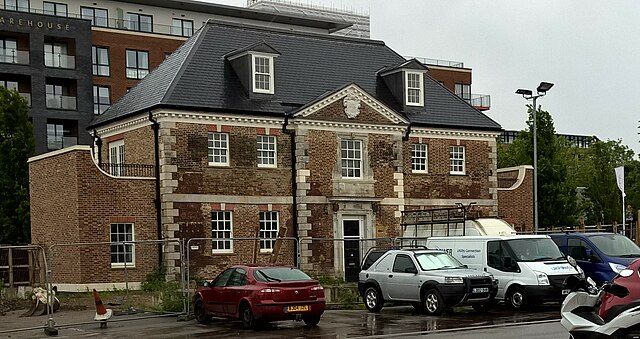The Royal Artillery Museum, which was one of the world's oldest military museums, was first opened to the public in Woolwich in southeast London in 1820. It told the story of the development of artillery through the ages by way of a collection of artillery pieces from across the centuries.
The Rotunda, Woolwich: home of the museum from 1820 to 2001
The former Royal Military Academy building in the Royal Arsenal housed the museum's collection from 1802 to 1820
John Nash's Hyde Park Rotunda was rebuilt on Woolwich Common in 1820 to house the Royal Artillery Museum collections until 1999
Part of the museum collection as presented in Firepower's Gunnery Hall, with 20th-century pieces on the ground floor and older items above
The Royal Arsenal, Woolwich is an establishment on the south bank of the River Thames in Woolwich in south-east London, England, that was used for the manufacture of armaments and ammunition, proofing, and explosives research for the British armed forces. It was originally known as the Woolwich Warren, having begun on land previously used as a domestic warren in the grounds of a mid-16th century Tudor house, Tower Place. Much of the initial history of the site is linked with that of the Office of Ordnance, which purchased the Warren in the late 17th century in order to expand an earlier base at Gun Wharf in Woolwich Dockyard.
Royal Arsenal Gatehouse (Beresford Gate) in 2007
The octagonal tower of Tower Place alongside the Royal Military Academy
Shot stacked up outside the Royal Laboratory gates and rows of guns arrayed in the background (James Cockburn, 1795).
One of a pair of 17th-century pavilions, the earliest buildings on the site, undergoing restoration (2015)








